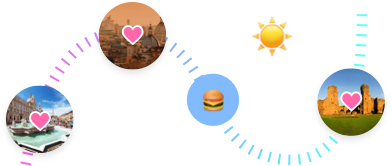


























































Iquitos is a city in northeastern Peru, capital of the Loreto region. It is the largest center of the Peruvian Amazon, founded in 1864 on the Amazon River. Iquitos is commonly recognized as the largest continental city not reachable by land. There is actually a road that leads south, but it is a connection of just 100 km, with the small town of Nauta. To reach Iquitos you can use the river route, through the large port, or the air one, thanks to the airport.
The area was long inhabited by indigenous peoples. The founding date of the European city is uncertain. Spanish historical documents state that it was set up around 1757 as a Spanish Jesuit reduction by the banks of the Nanay River. The Jesuits gathered local Napeano (Yameo) and Iquito natives to live here, and they named it San Pablo de Napeanos. In the late 19th century, the city became the center of export of rubber production from the Amazon Basin and was the headquarters of the Peruvian Amazon Company. The rubber boom attracted thousands of European traders and workers, some of whom amassed wealth with the high-volume production, processing and trade in rubber. The city's economy was highly dependent on PAC, controlled in the nation by Peruvian businessman Juan Luis Arana. The operations of PAC's forces in the Basin, who kept indigenous workers in near-slavery conditions through the use of force and harsh treatment, was investigated by Roger Casement, the British consul-general in Peru. He had investigated labor conditions for natives in the Congo Free State when it was under King Leopold's control, reporting on the abuse of thousands of workers. His 1913 exposure of abuses of Peruvian workers caused a reaction against the company among the several British members of its board and many stockholders. The company struggled financially and lost backing in the UK. Also, rubber seedlings had been smuggled out of the country and cultivated on plantations in Southeast Asia. As the plants matured, the competition undercut prices of the Peruvian product. With the decline of the rubber industry, many workers and merchants left Iquitos. As one of the leading cities, along with Manaus, in the huge Amazon rubber boom (1880-1914), Iquitos was influenced by the numerous Europeans who flocked to it. Architecture and cultural institutions established during this period expressed their own traditions. An opera house and Jewish cemetery were among the institutions established. Later in the 20th century, the city and region diversified its economy. The region exported timber, fish and their products, oil, minerals, and crops. It also derives considerable revenue from tourism and related crafts, as well as bakery, and carbonated drinks and beer. By 1999, the city had consolidated its four municipalities. The architecture and historical treasures reflect the colonial and early 20th-century European period, attracting an increased tourist trade in the 21st century. Also it is a center of ecological tourism. It has become a major cosmopolitan city with strong roots in the Amazon, featuring a complex history and cuisine, Amazonian landscapes, nightlife, and a growing cultural movement. In 2012, 250,000 visitors were recorded. Many have been attracted since the Amazon rainforest was ranked as one of the Seven Natural Wonders of the World. Iquitos inaugurated international flights to the main hub of Panama City in 2012, with shared destinations with Miami and Cancún. Its international airport is expected to become one of six international air centers of Peru. The city was ranked as sixth on the list of "10 leading cities in 2011" of the Lonely Planet guidebook. The Historic Center of Iquitos has several structures that have been designated as part of the Cultural Heritage of the Nation: the Cathedral of Iquitos, the Iron House, the Old Hotel Palace, Cohen House, and more than 70 other buildings. Other landmarks are the Plaza de Armas; Jiron Prospero, an avenue that is the site of several shopping and historical areas; and the lively neighborhood of Belén, often dubbed the "Amazon Venice" for its many waterways. The city is also home to the Amazon Library, one of the two most important in Latin America. The city can be reached only by airplane or boat, except a road to Nauta, a small town roughly 100 km (62 mi) south (which is not connected to the country's main road network). Ocean vessels of 3,000 to 9,000 tons and 5.5 meters (18 ft) draft can reach Iquitos via the Amazon River from the Atlantic Ocean, 3,600 kilometers (2,200 miles) away. Most people travel within the city via bus, motorcycle, or the ubiquitous auto-rickshaw (mototaxi, motorcar or motorcar). This is a modified motorcycle with a cabin supported by two wheels, seating up to three persons. Transportation to nearby towns often requires a river trip via pequepeque, a small public motorized boat.